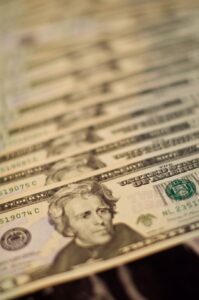Forex Trading Hours: A Beginner’s Guide to When the Market Opens
As a beginner in the world of forex trading, understanding the forex trading hours is essential. Unlike other financial markets, the forex market operates 24 hours a day, five days a week. This means that traders have the opportunity to trade currencies at any time, regardless of their location. However, not all trading hours are created equal, and knowing when the market opens and when it is most active can greatly improve your trading results.
The forex market is divided into four major trading sessions: the Sydney session, the Tokyo session, the London session, and the New York session. Each session has its own characteristics and offers different trading opportunities.
The Sydney session kicks off the trading week, opening at 10 PM GMT on Sunday night and closing at 7 AM GMT on Monday morning. This session is generally considered less volatile, as it overlaps with the end of the Asian session and the start of the European session. Most of the major currency pairs, such as EUR/USD, GBP/USD, and USD/JPY, are not as active during this time, but some currency pairs involving the Australian dollar, like AUD/USD and AUD/JPY, may see more movement.
The Tokyo session starts at 12 AM GMT and ends at 9 AM GMT. This session is known for its liquidity, as it overlaps with the opening of the London session. The major currency pairs involving the Japanese yen, such as USD/JPY and EUR/JPY, tend to be more active during this session. Traders should keep an eye on economic news releases from Japan during this time, as they can have a significant impact on the market.
The London session is often considered the most important session, as it accounts for the majority of forex trading volume. It starts at 8 AM GMT and ends at 5 PM GMT. This session is characterized by high liquidity and volatility, creating ample trading opportunities. Major currency pairs, like EUR/USD, GBP/USD, and USD/JPY, are most active during this time. Traders should pay attention to economic news releases from the United Kingdom and the Eurozone, as they can significantly influence currency movements.
The New York session, starting at 1 PM GMT and closing at 10 PM GMT, overlaps with the end of the London session. This session is known for its high volatility, as it coincides with the opening of the US stock market. Major economic news releases from the United States can greatly impact currency movements during this time. Currency pairs involving the US dollar, such as EUR/USD, GBP/USD, and USD/JPY, are particularly active during the New York session.
While the forex market operates 24 hours a day, it is important to note that not all trading hours are equally favorable for trading. The best time to trade is when there is an overlap between two major sessions. For example, the overlap between the London and New York sessions, from 1 PM GMT to 5 PM GMT, is considered the most active and potentially profitable time to trade, as it combines the high liquidity of the London session with the volatility of the New York session.
It is also worth mentioning that while the forex market operates continuously, trading volumes and volatility can vary throughout the day. There are quieter periods, known as market lulls, when trading activity slows down. These lulls usually occur during the Asian session, between 9 PM GMT and 12 AM GMT, and during the late afternoon in the New York session, around 5 PM GMT.
In conclusion, understanding the forex trading hours is crucial for beginners in the world of forex trading. The forex market operates 24 hours a day, five days a week, with four major trading sessions: Sydney, Tokyo, London, and New York. Each session has its own characteristics and offers different trading opportunities. By being aware of the trading hours and the overlaps between sessions, traders can maximize their chances of success in the forex market.






